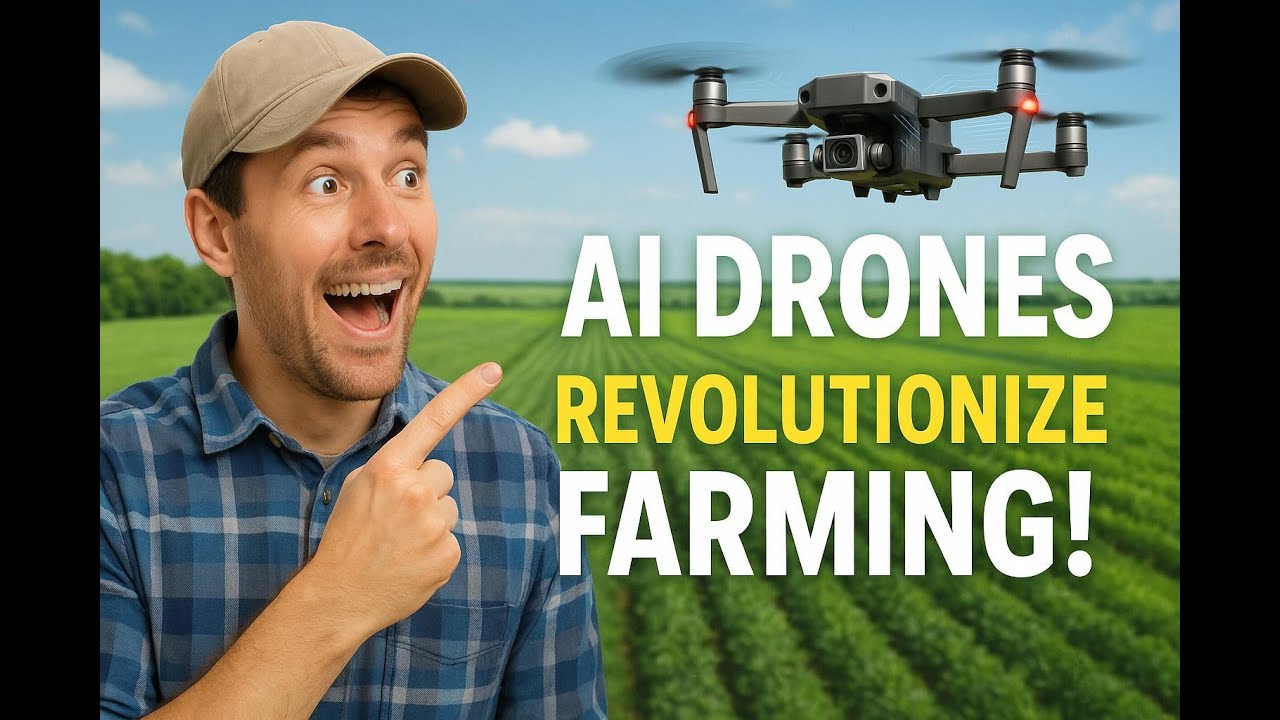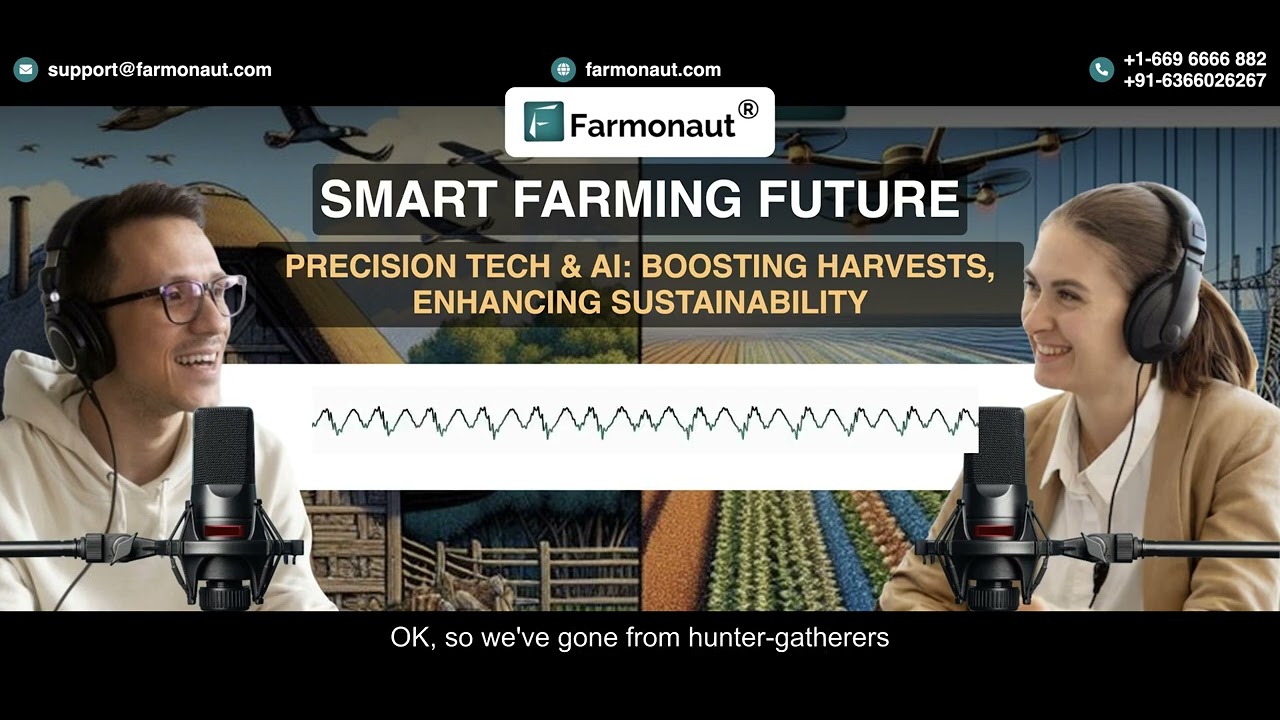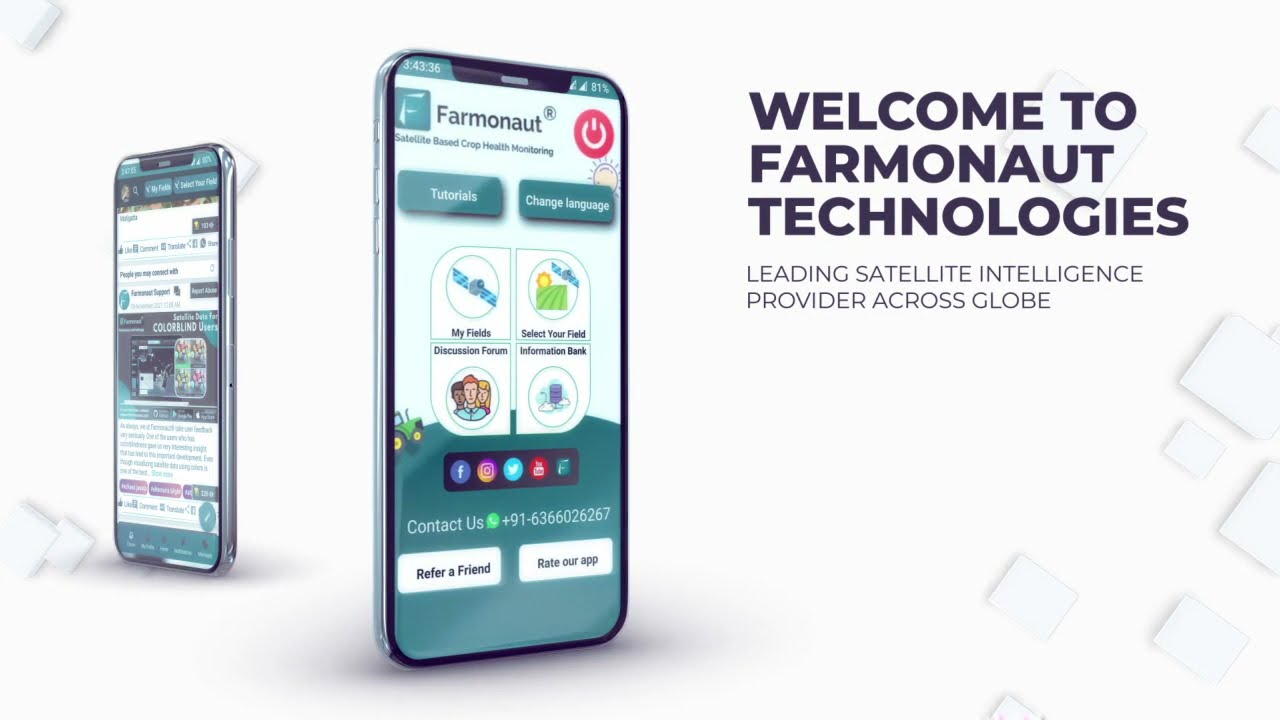Technological Advances in Farming: Top 2025 Breakthroughs
“In 2025, AI-powered farming is projected to boost crop yields by up to 30% globally.”
“Over 60% of farms worldwide are expected to adopt automation technologies by the end of 2025.”
Summary: Technological Advancements in Farming—Transforming Agriculture for 2025 and Beyond
The agricultural sector is undergoing a profound transformation driven by rapid technological advances in farming. As the global population continues to grow and climate change presents new challenges, the integration of advanced technologies is not only enhancing productivity but also promoting sustainability and resilience. By 2025, farming technology will have evolved far beyond mechanization. We are now entering an era marked by precision agriculture, automation, and data-driven management, revolutionizing food production on a global scale.
Whether utilizing satellite imagery, AI-powered analytics, blockchain traceability, or smart management systems, these advancements are equipping farmers to meet 21st-century needs efficiently. From optimizing crop yields to minimizing resource waste, the adoption of sophisticated tools and platforms is shaping a future where resilient, sustainable agriculture will be the norm worldwide.
The Impact of Technological Advances in Farming – 2025 and Beyond
Technological advances in farming have redefined what is possible in agricultural production. While past decades focused on incremental yield improvements and simple mechanization, the current wave of innovation is characterized by the integration of diverse digital, automation, and biological technologies. These changes impact not only the efficiency and productivity of farm operations, but also the sustainability of agricultural practices and the resilience of food systems under pressure from climate variability.
- Data-driven precision: Sensors, AI, and satellite imagery enable highly targeted management of crops, soil, and resources, minimizing waste and environmental impact.
- Automation: Robotics and autonomous machinery reduce manual labor, enabling faster, safer, and more consistent operations, and addressing labor shortages worldwide.
- Integrated platforms: Management software consolidates decision-making, finances, compliance, and logistics into unified hubs, enhancing operational visibility.
- Sustainability focus: Advancements in biotechnology, irrigation, and environmental tracking help align agriculture with global efforts to combat resource depletion and mitigate greenhouse gas emissions.
- Accessibility: Digital tools, mobile apps, and API integrations make cutting-edge technology available to farmers of all scales—no longer just large agribusinesses.
As we move toward 2025, the cumulative effect of these technological advancements in farming is a sector ready to produce more with less, under increasingly challenging conditions.
Key Trends in Technological Advancements in Farming for 2025
Let’s dive deeper into the key areas where technological advances in agriculture are transforming the industry, examining how each breakthrough is driving the sector toward sustainable growth, greater efficiency, and future-ready resilience.
- Expansion of precision agriculture using real-time data and variable-rate technology
- Deployment of automation and robotics for harvesting, weeding, and planting
- AI- and machine learning-driven crop management, prediction, and advisory services
- Widespread use of satellite-based monitoring and IoT sensors for soil, crop, and resource tracking
- Bioengineering—gene editing for resilience and higher-yield crop varieties
- Smart, automated irrigation and water conservation systems
- Integrated digital platforms for comprehensive farm, fleet, and supply chain management
- Enhanced traceability and sustainability through blockchain-driven transparency
Precision Agriculture and Smart Management Systems
Ever since precision agriculture emerged as a concept, its influence on modern farming has grown exponentially. By 2025, widespread adoption of technological advancements in farming such as GPS-guided tractors, drone mapping, multispectral satellite imagery, and real-time sensors allows farmers to manage every square meter of their fields with unprecedented accuracy.
- Variable rate application: Inputs like fertilizers and pesticides are applied only where needed, at soil- and crop-specific rates, dramatically reducing chemical waste, environmental impact, and input cost.
- Soil health monitoring: Satellite and in-field sensors track key parameters—moisture, nutrients, pH—enabling customized soil management and optimizing yields.
- Real-time decision-making: Algorithms and AI-based platforms transform continuous incoming data into actionable insights for planting schedules, input applications, and harvesting strategies.
- Weather adaptation: Weather-monitoring systems integrate with farm equipment and management platforms, helping farmers proactively respond to changing weather patterns and reduce crop losses.
This systematic, data-centric approach is transforming the sector, helping align commercial imperatives with sustainable agricultural practices.
Automation and Robotics: The Rise of Intelligent Farming Operations
By 2025, automation is a cornerstone of modern farming. Sophisticated robotics, autonomous machinery, and intelligent implements now perform a wide variety of tasks with high efficiency and precision.
- Autonomous tractors & harvesters: Equipped with GPS, machine vision, and AI, these machines perform planting, plowing, and harvesting with minimal human intervention.
- Robotic weeders: Use computer vision and AI to identify and eradicate weeds selectively, helping reduce chemical herbicide use and promote environmental health.
- Automated drones: Conduct aerial surveys, monitor crop health, apply precision treatments, and track livestock, all with minimal labor requirements.
- 24/7 operations: Robotics enable round-the-clock work regardless of labor shortages or weather, increasing speed and accuracy of routine fieldwork.
These technological advances in farming are particularly critical for regions facing acute labor shortages and for large-scale agricultural businesses looking to enhance productivity while maintaining quality and resource efficiency.
Artificial Intelligence and Machine Learning in Agriculture
One of the most significant advancements for farming technology in 2025 is the mature integration of AI and machine learning across all stages of agricultural management:
- Big Data analytics: Massive streams of farm data are analyzed to provide insights on crop growth, pest threats, and weather anomalies.
- Predictive models: AI forecasts weather risks, pest outbreaks, and disease pressure, allowing for proactive rather than reactive practices.
- Remote sensing & diagnosis: AI examines satellite imagery and sensor data to detect subtle crop stress, nutrient deficiencies, or irrigation issues in real time.
- Personalized advisory: AI-driven systems like Jeevn AI (see below) generate tailored recommendations for planting, input management, and harvesting schedules.
For many, these innovations mean more than just profits—they enable a new level of food security, crop resilience, and sustainable production, all of which are essential as the population continues to grow.
Satellite Technology and IoT: Revolutionizing Crop and Resource Monitoring
Satellite technology and IoT (Internet of Things) have evolved into central pillars of technological advancement in agriculture for 2025:
- Satellite imagery & NDVI: Frequent, high-resolution imagery allows for monitoring of crop health, soil conditions, and field variabilities at scale.
- Multispectral analysis: Distinguishes between healthy and stressed vegetation, detects early signs of nutrient or water shortage, and informs targeted interventions.
- IoT sensors: Connected devices in fields track soil moisture, temperature, humidity, and more, providing the data backbone for smart irrigation and input optimization.
- Integration with platforms: Cloud-based apps and APIs (such as the Farmonaut API and API developer documentation) streamline real-time monitoring, field scouting, and remote diagnosis for all stakeholders.
Farmonaut leverages a powerful suite of these technologies to make satellite-driven insights affordable and accessible for everyone from smallholder farmers to governments, with applications in agriculture, mining, and infrastructure.
Biotechnology and Gene Editing: Future-Proofing Crops
Alongside digital innovations, biotechnology and gene editing are unlocking new frontiers in crop management for 2025:
- CRISPR gene editing: Enables precise modification of crop varieties for traits like disease, pest, and drought resistance, without traditional breeding’s lengthy cycles.
- Stress-resilient crops: New generations of plants withstand extreme weather events, temperature fluctuations, and emerging pathogens.
- Reduction in chemical inputs: Genetically improved crops often require fewer fertilizers and pesticides, further reducing environmental impact.
- Accelerated development: Modern biotechnologies compress the timeline of bringing new, fortified crops to market.
These bio-based technological advances in agriculture directly support food security and resilience in the face of climate change and population pressures.
Smart Water Management and Precision Irrigation Systems
Water efficiency is rapidly becoming a non-negotiable priority. Smart irrigation systems and connected sensors are at the forefront of 2025’s technological advancements in farming:
- Soil moisture sensors: Continuously monitor water availability at various soil depths to optimize irrigation timing and schedules.
- Automated irrigation: Integrates sensor feedback and weather forecasts to apply water only where and when needed, cutting waste by up to 40% in some systems.
- Drought-resilient varieties: Advanced breeding enables crops that thrive even in water-stressed conditions, further enhancing resilience.
- Remote management: Cloud-based controls enable adjustment of water delivery from any device, improving efficiency on both small and large farms.
These technologies not only help reduce resource depletion but also protect against the risks of climate change and unpredictable rainfall patterns.
Digital Platforms for Integrated Farm Management
Farm management platforms have evolved to become the unifying dashboard for all farm operations. By consolidating satellite, sensor, financial, fleet, and compliance data, these platforms enable streamlined, optimized management of even the most complex agricultural operations.
- Large-scale farm management: Tools like Agro Admin App make it easy to oversee sprawling operations, monitor fields remotely, and analyze productivity trends.
- Fleet and resource management: Solutions such as Farmonaut’s Fleet Management module optimize logistics, improve vehicle utilization, enhance safety, and drive efficient equipment allocation.
- Environmental monitoring: Platforms now include carbon footprinting tools, allowing growers to track emissions and balance profitability with environmental impact.
- Blockchain-based traceability: Solutions like product traceability modules (see Farmonaut) ensure transparency, build consumer trust, and streamline regulatory compliance.
- Access to financing: With satellite-based verification, systems such as Crop Loan and Insurance Verification make it easier for farmers to access loans and insurance, reducing time, fraud, and paperwork.
These all-in-one management systems are the nervous system of future agriculture, connecting every breakthrough and empowering farmers to optimize production at every step.
Comparative Feature Table of 2025 Farming Technologies
| Technology Name | Estimated Productivity Increase (%) | Sustainability Impact | Adoption Rate (Projected % in 2025) | Example Application |
|---|---|---|---|---|
| AI-Based Crop Monitoring | Up to 30% | Up to 25% reduction in chemical use, 20% less water | ~55% | Detecting crop stress via satellite and IoT sensors, adaptive input management |
| Autonomous Drones | 10–25% | Reduced fuel use, ~30% cut in manual labor | ~45% | Automated crop spraying, 24/7 aerial scouting |
| Precision Irrigation Systems | 15–30% | Up to 40% water savings | ~60% | Sensor-driven drip irrigation with automated schedules |
| Smart Farm Management Systems | Variable: 10–25% | Overall reduction in waste, enhanced emissions tracking | ~70% | Unified dashboards for resource tracking and actionable insights |
| Biotech Crop Varieties | 10–20% | Lower pesticide/fertilizer needs, improved climate resilience | ~40% | Drought-tolerant, pest-resistant genetically edited crops |
| Blockchain Traceability Solutions | Process improvement: not directly yield-based | Enhanced transparency, reduced fraud, improved compliance | ~35% | Authenticity tracing of agricultural supply chains |
“In 2025, AI-powered farming is projected to boost crop yields by up to 30% globally.”
Farmonaut: Empowering Agricultural Innovation for 2025
At Farmonaut, we are dedicated to making satellite-driven insights not only affordable but also accessible across the agriculture sector. By leveraging multispectral satellite imagery, AI-based advisory, and blockchain-based traceability, our platform supports real-time monitoring of crop health, soil conditions, and farm resources.
- Satellite-Based Monitoring: Our technology delivers actionable insights—like NDVI crop health, soil moisture, and temperature—that enable data-driven decision-making from planting to harvest.
- Jeevn AI Advisory System: Our AI analyzes weather, field, and sensor data to provide tailored recommendations for maximizing yields and resource use.
-
Blockchain Traceability: We offer transparent, secure tracking of crop journeys from field to market, essential for compliance, consumer trust, and supply chain management.
Explore Farmonaut Traceability Solutions -
Fleet & Resource Management: Our tools help farms and agri-businesses coordinate vehicles and machinery effectively, minimize downtime, cut emissions, and ensure asset safety.
See how we optimize fleet management - Environmental Impact: We provide real-time carbon footprinting tools to help farms track greenhouse gas emissions, demonstrating the link between operational efficiency and sustainability.
- Scalable, API-Driven Tools: Via our public APIs, developers and agri-tech businesses can integrate satellite, weather, and resource data into their own platforms.
-
Accessible Platforms: Our technology is available via Android, iOS, web, and API—making advanced farm management tools available to all.
Access Farmonaut’s Platform
Farmonaut Subscription Options
Choose the package that fits your monitoring needs and budget. Our intuitive pricing table provides full-feature access for individuals, businesses, and governments.
Future Trends: Sustainability, Resilience, and Beyond 2025
The landscape of technological advances in farming is dynamic—new advancements continue to reshape what’s possible at the intersection of technology and agriculture. What can we expect as the decade advances?
- Scalable, cross-sector platforms: Seamless integration between agriculture, logistics, supply chain, and finance will enable fully transparent and verifiable food production.
- Advanced predictive analytics: AI will forecast not only field-level issues, but global supply and demand, enabling preemptive actions for food security.
- Decentralized data and traceability: Blockchain and open data standards will expand, increasing access and accountability across international markets.
- Climate-adaptive farming systems: Farms will flexibly adapt operations based on real-time satellite and climate data—optimizing for both yield and environmental impact.
- Personalized, small-scale crop optimization: Individual farmers, even in remote regions, will access tailored AI-driven management platforms on their mobile devices.
- Stronger environmental monitoring: Carbon tracking will become standard, integrated directly into government and business reporting to meet global sustainability goals.
These advancements point toward a future where every decision in agriculture is empowered by evidence, every crop is grown as efficiently and sustainably as possible, and resource stewardship is both profitable and essential.
Frequently Asked Questions About Technological Advances in Farming 2025
What are the most important technological advancements in farming for 2025?
- Precision agriculture (satellite imagery, GPS, sensors)—enables accurate input management.
- AI and machine learning—powers predictive analytics and real-time farm advisories.
- Automation and robotics—delivers labor-saving, high-efficiency farming operations.
- Biotechnology and gene editing—creates resilient, high-yield crop varieties quickly.
- Integrated management platforms with blockchain—streamline operations, finance, and traceability.
How does Farmonaut contribute to the technological advancement in agriculture?
Farmonaut provides affordable, accessible, and scalable satellite-based monitoring and AI-driven advisory platforms for crop health analysis, fleet/resource management, blockchain-enabled traceability, and environmental impact tracking. Our modular approach empowers both small and large operations to optimize yields while supporting sustainability.
Can small farmers take advantage of these technological advances?
Yes! With the rise of mobile apps, cloud-based systems, and API-driven insights (see Farmonaut’s platform), small-scale farmers can now use precision agriculture, AI-driven advisories, and real-time monitoring tools just as efficiently as large-scale operators.
What is the role of blockchain in agricultural technology?
Blockchain provides secure, transparent records for the entire agricultural value chain. By using blockchain-based traceability tools, farmers and agri-businesses can assure authenticity, fight fraud, and strengthen compliance—for example, through Farmonaut’s Traceability Module.
How are sustainability and environmental impact measured in modern farming?
Today, environmental monitoring relies on real-time satellite data, soil/water sensors, and carbon footprinting platforms. These tools allow accurate measurement of emissions, resource usage, and positive impacts from precision and automation technologies.
Conclusion: Charting the Future of Technological Advances in Farming—2025 and Beyond
The journey from traditional methods to a future built on technological advancements in farming marks the most profound transformation in agriculture since the Green Revolution. As we look toward 2025 and beyond, it is clear that AI, automation, satellite imagery, precision inputs, and integrated management platforms will continue to drive higher productivity, lower costs, and stronger sustainability for farmers worldwide.
With innovative solutions and accessible technology, the industry will not only meet the needs of a growing population but also empower a new generation of climate-smart, data-driven, and environmentally responsible agriculture.
Ready to experience the next revolution in smart farming? Get started with Farmonaut’s platform today.

















